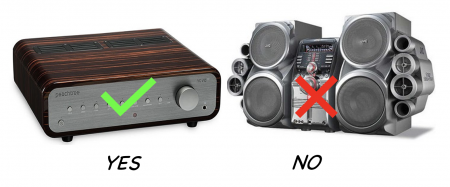Lawyer acceptance factor
In the olden days when hi-fi envy was still a thing, spoddy anorak types would speak of the “wife appreciation factor” — the kind of attributes that would see that new pre-amplification gain-stage attenuator make it through the door without the missus hitting the roof.
|
The design of organisations and products

|
Generally, an awesome total harmonic distortion rating wouldn’t cut it. It had to look nice, which meant “acceptably unobtrusive” and ideally invisible, but failing that, having artfully-applied walnut veneer, a minimalist fascia and a resemblance to mid-century Danish lounge furniture would at least put you in play.
We mention this because the same goes, with feeling, when embarking on a user change journey, particularly where the gang of redoubtable hobbits on that journey comprises members of the legal profession ten or twenty years into their practising careers — or for that matter business people used to their dreary output. The business case may write itself, the MIS it promises to kick off may be overwhelming but, still, it behoves a smart middle manager to consider how the “change journey” will present itself to the legal eagles whom you expect to embark on it.
Because they’re a stubborn, recalcitrant lot, are our sibling lawyers. The way they see it, they are already on a journey, it is tedious enough as it is, and they are not interested in being sent on some M.B.A.-initiated diversion intended to convert them, as they see it, into glorified hamsters.[1]
Contrary to received wisdom, and however vigorously they may, as a class, declare themselves proudly prehistoric, lawyers are not universal Luddites, and will hoover up any tech they come across that makes them get where they think they are going faster.
Mobile email, for example, got accepted so quickly that it barely spent any time at all as an “innovation”: it went from science fiction to the commonplace overnight, skipping a phase transition altogether, like dry ice subliming to CO2 and within six months had become something everyone whinges about. Likewise, fax, the in, automated document comparison, remote working, e-discovery and a host of other neat recent tricks.
But — and therefore — these tend not to be the applications management complains about lawyers not using. The problem here tend to be the converse: that lawyers spend too much time using these apps, and management embarks on pitch battles to remove them, limit internet access to stop people looking at blogs or cat videos or, bizarrely, functionally comparing documents. again. There is a classic line of questioning that calls for the exasperated Kermit face:
“Do you really need standalone comparison software? Did you know there is a comparison function in Microsoft Word? Have you tried that?
The innovations which draw sardonic clog-throwing allusions tend to not make a lawyer’s life easier but rather make it worse: they are imposed to make someone else’s life easier — usually a bean counter’s — and ones that deprive her of her autonomy, or reduce her to a form-filling, button-pushing functionary — expect these to take a little while longer[2] to “catch on”.
See also
References
- ↑ Who breaks a hamster on a wheel?
- ↑ i.e., until the Apocalypse.